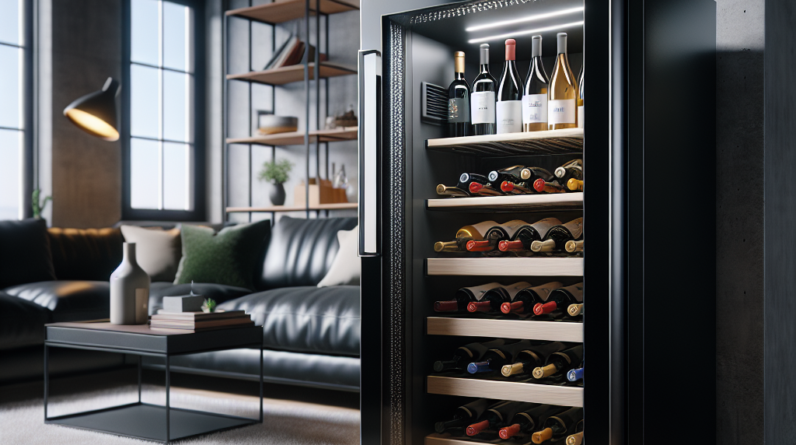
Maintaining a clean and well-functioning blender is crucial for ensuring its longevity and getting the most out of your blending experience. In this comprehensive guide, you will discover essential tips and techniques to effortlessly clean your blender, prevent buildup and odors, and keep it running smoothly for years to come. Whether you are a smoothie enthusiast, a culinary expert, or simply rely on your blender for everyday tasks, these expert-backed strategies will help you maintain your blender in top-notch condition. Say goodbye to stubborn residue and hello to a sparkling and efficient blender with our ultimate guide.
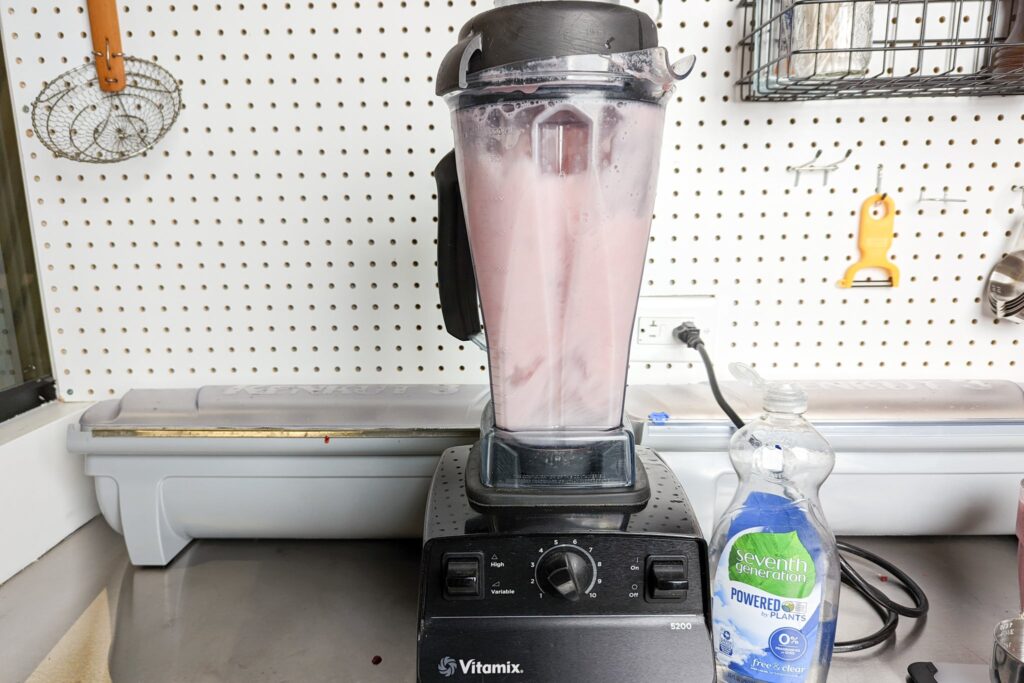
This image is property of cdn.thewirecutter.com.
The Ultimate Guide to Cleaning and Maintaining Your Blender
Cleaning and maintaining your blender is essential for its longevity and ensuring its optimal performance. By following a few simple steps, you can keep your blender in pristine condition, free from stains, odors, and wear. In this comprehensive guide, we will take you through each step of the cleaning and maintenance process, from disassembling the blender parts to caring for the motor and maintaining the blender jar. Let’s get started!
1. Cleaning the Blender
1.1 Removing and Disassembling the Blender Parts
Before cleaning your blender, it’s important to remove and disassemble the various parts. Start by unplugging the blender from the power source. Carefully remove the blender jar, lid, and any other detachable components such as the gaskets, seals, and tamper. Take note of how everything fits together for easy reassembly later.
1.2 Preparing Soap and Water Solution
To clean the blender parts, you’ll need a soap and water solution. Fill your sink or a large bowl with warm water and add a small amount of mild dish soap. Swirl the water to create a soapy mixture, ensuring it’s well-dissolved.
1.3 Handwashing the Blender Parts
Place the blender parts in the soapy water solution and let them soak for a few minutes. Then, using a sponge or soft brush, gently scrub each part to remove any residue or food particles. Pay close attention to the blades, gaskets, and seals, ensuring they are thoroughly cleaned. Rinse each part with warm water to remove any soap residue.
1.4 Cleaning the Blender Base
While the blender parts are soaking, don’t forget to clean the blender base. Take a damp cloth or sponge and wipe the base, being careful not to get any water near the electrical components. Remove any dirt or spills that may have accumulated on the base, ensuring it is clean and dry before reassembling.
1.5 Drying and Reassembling the Blender Parts
Once all the blender parts and the base are clean, it’s time to dry them thoroughly. Use a clean dish towel or let them air dry on a clean surface. Ensure that all parts are completely dry before reassembling to prevent moisture buildup and potential damage.
To reassemble the blender, refer to the notes you made during the disassembly process. Carefully put the components back together, making sure they fit snugly. Once reassembled, your blender is ready for use.
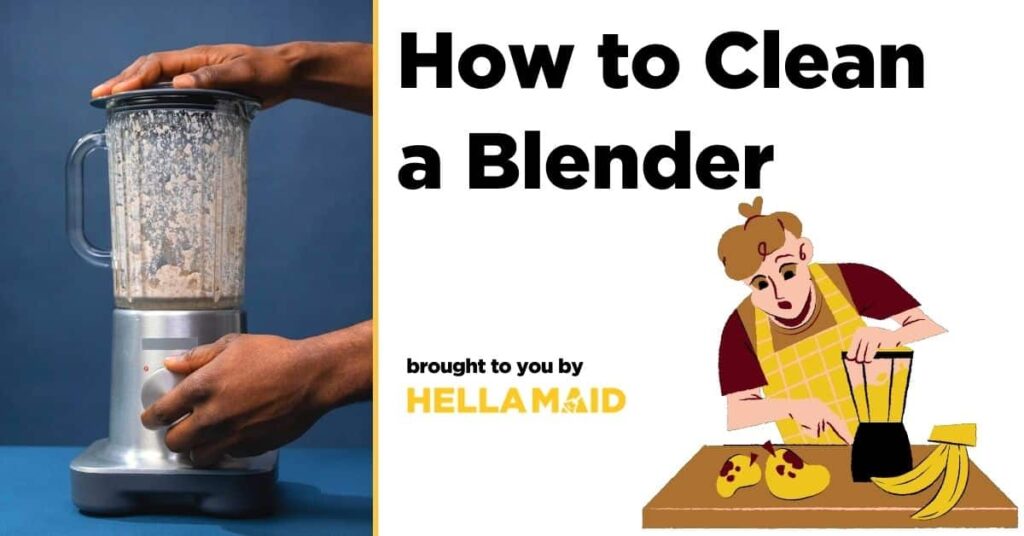
This image is property of hellamaid.ca.
2. Deep Cleaning the Blender
2.1 Removing Stains and Odors
Over time, your blender may develop stains or acquire lingering odors. To tackle stains, prepare a paste using baking soda and water. Apply the paste to the stained areas and let it sit for a few minutes before gently scrubbing with a sponge or brush. For odors, you can try blending a mixture of equal parts water and lemon juice or vinegar to help eliminate any unpleasant smells.
2.2 Soaking the Blender Parts
For a deeper clean, you can soak the blender parts in a mixture of warm water and dish soap for a longer period. This helps to loosen any tough residue or stains. Fill a container or sink with the soapy water solution and submerge the parts for about 30 minutes to an hour. After soaking, use a sponge or brush to remove any remaining debris before rinsing thoroughly.
2.3 Scrubbing and Disinfecting the Blender
To ensure optimal hygiene, it’s essential to regularly scrub and disinfect your blender. After disassembling the blender as mentioned earlier, use a small brush to reach into crevices and scrub away any hidden residue. For disinfection, you can use a mixture of equal parts water and white vinegar or a food-safe disinfectant spray. Apply the solution using a cloth or sponge, focusing on all surfaces. Rinse with warm water to remove any residue.
2.4 Cleaning the Blender Gaskets and Seals
The gaskets and seals play an important role in preventing leaks during blending. To clean them, remove them from the blender and gently scrub with a soft brush or sponge. Pay attention to any grooves or crevices where residue may accumulate. Rinse thoroughly and ensure they are completely dry before reassembling.
3. Maintaining the Blender Blades
3.1 Regular Blade Cleaning
Blender blades can easily accumulate residue, leading to reduced blending performance. To maintain the blades, it’s important to clean them regularly. After each use, remove the blender jar and rinse it immediately to prevent food from drying and sticking to the blades. If there is any residue left, use a sponge or brush to gently scrub the blades with warm, soapy water. Rinse thoroughly and dry before reassembling.
3.2 Sharpening the Blender Blades
Over time, blender blades may become dull, affecting their chopping and blending efficiency. If you notice a decline in performance, you may need to sharpen the blades. Most blender blades are not designed to be sharpened at home, so it’s best to consult the manufacturer’s instructions or contact customer support for guidance. They can provide recommendations for professional sharpening services or offer blade replacement options.
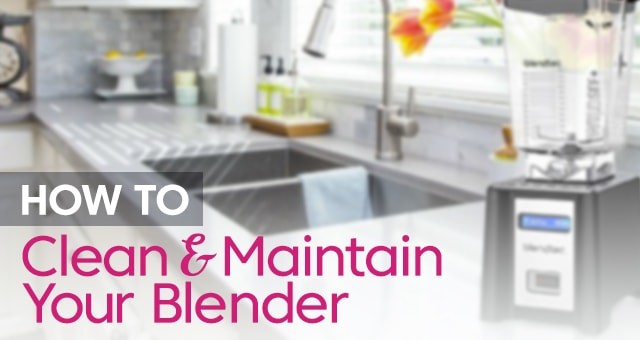
This image is property of s3-assets.quenchessentials.com.
4. Caring for the Blender Motor
4.1 Keeping the Motor Housing Clean
To ensure the longevity of your blender’s motor, it’s important to keep the motor housing clean. Avoid allowing any liquids or food particles to come into contact with the motor. If any spills or splatters occur, unplug the blender and clean the motor housing immediately using a damp cloth or sponge. It’s crucial to prevent moisture from seeping into the motor, as it can cause damage or malfunction.
4.2 Avoiding Overheating and Burnout
Blenders are designed to handle specific tasks, and prolonged heavy use can lead to overheating and motor burnout. To prevent this, avoid running your blender for extended periods without giving it a break. If you’re blending thick mixtures or tough ingredients, it’s best to pulse the blender intermittently rather than continuously running it. This allows the motor to cool down and reduces the risk of overheating.
5. Cleaning and Maintaining the Blender Jar
5.1 Handwashing the Blender Jar
The blender jar is where all the blending magic happens, so it’s essential to keep it clean. After each use, remove the jar from the base and wash it by hand using warm, soapy water. Pay close attention to the blade area and the bottom of the jar, as they tend to accumulate residue and food particles. Rinse thoroughly and dry before reassembling.
5.2 Removing Stubborn Stains in the Jar
If your blender jar has stubborn stains or residue that regular washing doesn’t remove, there are a few methods you can try. One option is to fill the jar with warm water and a few drops of dish soap. Add a tablespoon of baking soda or a denture cleaner tablet and let it sit for a few hours or overnight. Then, scrub the stains with a sponge or brush and rinse thoroughly.
5.3 Dealing with Cloudy or Scratched Jar
Over time, the blender jar may become cloudy or develop scratches. While these do not affect the blender’s performance, they can be unsightly. To restore clarity and reduce the appearance of scratches, try using a mixture of equal parts water and vinegar. Pour the solution into the jar and swirl it around to cover all surfaces. Let it sit for a few minutes before rinsing thoroughly with warm water.
5.4 Replacing or Repairing the Blender Jar
If your blender jar becomes cracked, damaged, or no longer fits securely, it’s important to consider replacing it. Contact the blender manufacturer or check their website for replacement parts. In some cases, you may need to purchase a new blender jar altogether. Ensure that the replacement jar is compatible with your blender model to avoid any issues.
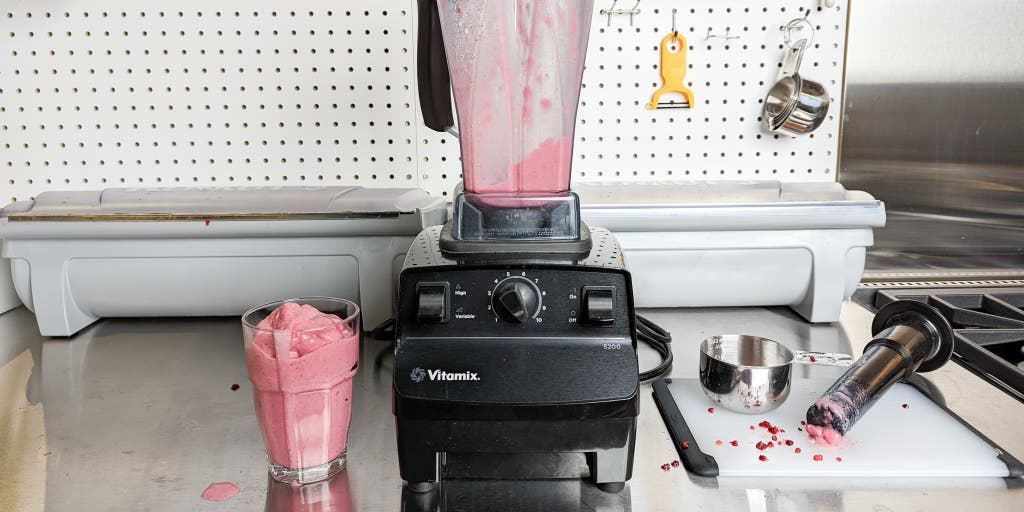
This image is property of cdn.thewirecutter.com.
6. Cleaning and Maintaining Blender Accessories
6.1 Washing Blender Lids and Caps
Blender lids and caps are often overlooked but can harbor residue and odors. To clean them, disassemble any removable parts and wash them in warm, soapy water. Pay attention to any rubber gaskets or seals attached to the lids or caps. Rinse thoroughly and dry before reassembling. If the lids or caps are dishwasher safe, you can also place them in the dishwasher for added convenience.
6.2 Maintaining Blender Tamper
If your blender comes with a tamper, it’s important to keep it clean and in good condition. Start by removing any food particles or residue from the tamper. Wash it by hand in warm, soapy water and rinse thoroughly. Ensure that it is completely dry before storing it with the rest of the blender components.
6.3 Cleaning Blender Spatulas and Scrappers
Blender spatulas and scrappers are great tools for removing every last bit of food from the blender jar. After each use, wash them by hand using warm, soapy water. Pay attention to any crevices or corners where residue may accumulate. Rinse thoroughly and dry before storing. If the spatulas or scrappers are dishwasher safe, you can choose to clean them in the dishwasher as well.
7. Tips for Cleaning and Maintaining the Blender
7.1 Cleaning Frequency
Regular cleaning is key to maintaining your blender’s performance and longevity. Aim to clean the blender after each use, especially if you’ve blended sticky or oily ingredients. For a more thorough cleaning, deep clean the blender once a week or as needed. By maintaining a regular cleaning routine, you’ll prevent residue buildup and keep your blender in optimal condition.
7.2 Using Cleaning Agents Properly
When using cleaning agents such as dish soap, vinegar, or baking soda, always follow the manufacturer’s instructions. Ensure that they are food-safe and suitable for the materials used in your blender. Avoid using harsh chemicals or abrasives that can damage the blender or leave behind harmful residues.
7.3 Storage and Organization
Proper storage and organization can help prolong your blender’s lifespan. When not in use, ensure that all blender parts are dry and free from moisture. Store them in a clean, dry area to prevent dust, dirt, or pests from coming into contact. Keep the blender base away from any potential spills or hazards, maintaining a clear area for safe operation.
By following this comprehensive guide to cleaning and maintaining your blender, you can ensure its longevity and optimal performance. Remember to always refer to the manufacturer’s instructions for specific guidance related to your blender model. With regular care and maintenance, your blender will continue to be a valuable kitchen companion for many years to come. Happy blending!
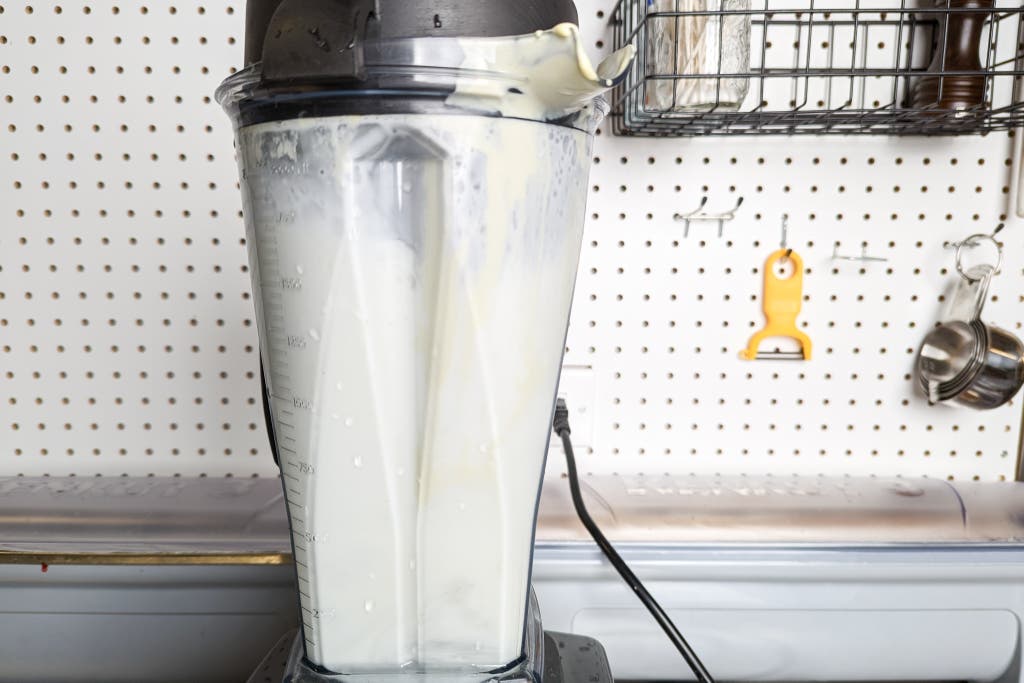
This image is property of cdn.thewirecutter.com.

